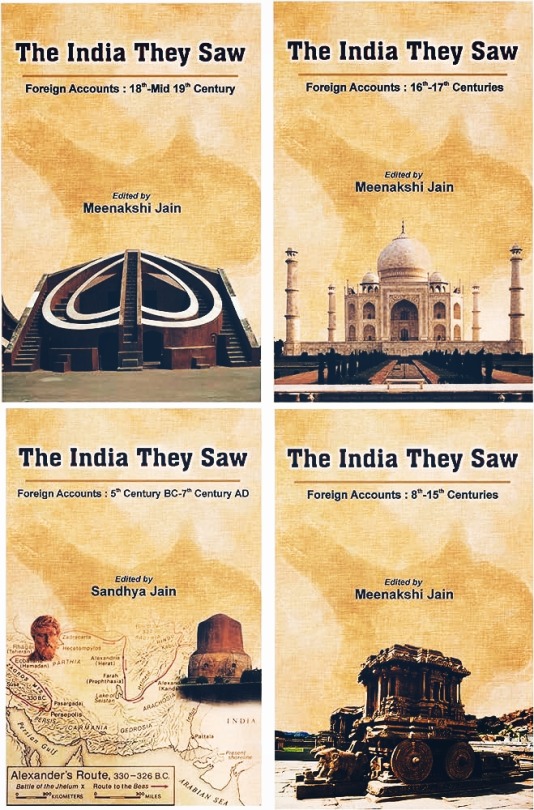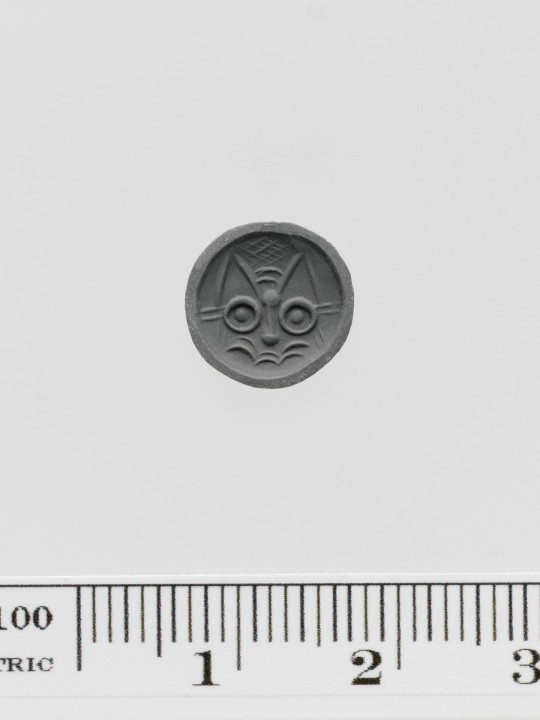Text
I would do anything to spend a day with my favorite fictional character. Just a simple 24 hours with them.
I would want them to tell me their life story. Tell me about the things they like and dislike. Maybe we'd cry. Maybe we'd laugh.
I already know them from the things I've read and watched, but I want to know them.
I'd thank them for saving me. For being the one there to hold me up when I had nothing and no one. Thank them for being my family when my own family wasnt there to support me.
48 notes
·
View notes
Text
House: Is letting someone win at chess sapiosexual bottoming
Y/N: Does anyone in this godforsaken group ever think before they speak
138 notes
·
View notes
Text
Books to Learn More About Hindu History






List and description under the cut >>
The India They Saw : Foreign Accounts from 5th Century BC -> 19th Century
Spanning over 4 volumes, this comprehensive collection brings together account of various foreign travelers, explorers and scholars. Their wonder at her rich philosophical efflorescence and material abundance.
Hindu Temples : What Happened To Them Vol 1+2, Sita Ram Goel
The first volume includes a list of 2,000 mosques that the author claims were built on Hindu temples, based primarily on the books of Muslim historians of the period or inscriptions found on mosques. The second volume excerpts from medieval histories and chronicles and from inscriptions concerning the destruction of Hindu, Jain and Buddhist temples. The authors claim that the material presented in the book as "the tip of an iceberg"
Heroic Hindu Resistance to Muslim Invaders (636 AD - 1206 AD), Sita Ram Goel
An analysis of Ram Gopal Misra's Indian resistance to early Muslim invaders, up to 1206 A.D.
Invaders and Infidels: From Sindh to Delhi: The 500-Year Journey of Islamic Invasions, Sandeep Balakrishna (Book 1 + 2)
Tells the story of the origins and trajectory of Islamic invasions into India. It begins with the first Muslim conquest and ends with Babur's invasion of Hindustan, spanning the period of the Delhi Sultanate which was in power for almost 320 years. This epochal story encompasses a vast sweep of events, which changed the history of India forever, and introduced it to an alien faith and a religious despotism such as the country had never experienced before. It comprises major and minor sagas of great heroism, untold savagery, stout resistance, brutal intrigues and epic tragedies.
The Hindus of Hindustan: A Civilizational Journey, Meenakshi Jain
Notwithstanding the views of a section of historians and literati, spiritual, religious, and cultural continuity in India goes back many millennia. Identification with, and adoration of, the land was expressed in the sixty-three verses long Prithvi Sukta of the Atharva Veda, described as the first “national song” in the world. Veneration of the land remained a recurrent theme in sacred literature.
Kautilya, in the Arthasastra, articulated the ideal of political unification, when he said that from the Himalayas to the seas, the land should have one ruler. That ideal was accompanied by a consciousness of cultural union.
Evidence of continuity of religious beliefs and motifs could be traced to the late Upper Palaeolithic (c. 9000-8000) site of Baghor I (Sidhi district, Madhya Pradesh), to the celebrated Indus Valley Civilization, and well thereafter.
Fight For Deities and Rebirth of Temples, Meenakshi Jain
This work examines the medieval response to temple destruction and image desecration. While temples were destroyed on a considerable scale, also noteworthy were the repeated endeavours to reconstruct them. In each instance of rebirth, the temple retained its original name, even though there was a visible downsizing in its scale and grandeur. The Keshava temple at Mathura, the Vishwanath temple at Kashi, the Somnath temple in Saurashtra, the Rama mandir at Ayodhya were among the shrines continually restored, well after Hindus had lost all semblance of political power. The Bindu Madhava, the most important Vishnu temple in Varanasi, was demolished in 1669 and a mosque constructed in its place. The temple now bearing the name Bindu Madhava is a modest structure in the shadow of the mosque, but continues the traditions associated with the site. Intriguingly, mosques built on temple sites often retained the sacred names —Bijamandal mosque, Lat masjid, Atala masjid, Gyanvapi mosque, and not to forget, masjid-i- janamsthan.
The Battle for Rama, Case of Temple at Ayodhya, Meenakshi Jain
From questioning the antiquity of Rama worship and the identity of ancient Ayodhya, certain historians have also challenged the widely held belief that Babri Masjid was built on the site of the Janmabhumi temple. Scholars have, however, traced the antiquity of the Rama Katha as far back as the sixth-fifth century BCE, when ancient ballads (Akhyanas) transmitted Rama's story orally. Valmiki’s Ramayana itself has been dated to the fourth-third century BCE. Over the centuries, Rama's story has been re-told in many vernaculars of the country. Rama is the exemplar of moral values for Hindu society and epitomizes its aspirations of Artha, kama, and above all, dharma. The proceedings of the Allahabad High Court have exposed the vulnerabilities of Left historians. They could proffer no evidence of continued Muslim presence at Babri Masjid, while the unwavering commitment of Hindu devotees to the site has been attested by several sources. Babri Masjid was not mentioned in the revenue records of the Nawabi and British periods, nor was any Waqf ever created for its upkeep. No Muslim filed an FIR or complained of dispossession or obstruction in his alleged use of the Masjid when the image of Sri Rama was placed under the central dome on 23rd December 1949. The Sunni Central Waqf Board entered litigation on 18th December 1961, just five days before the twelfth anniversary of the placement of the image in the Masjid, on which date any claim would have become time-barred. The Board did not file a suit for a possession; instead, it sought a declaration on the status of the property. Further, excavations of the ASI revealed uninterrupted occupation of the site since the 13th-century BCE. They also exposed remnants of the temple on which Babri Masjid was erected. The assertions of Left historians on Babri Masjid have all been found to be erroneous, yet there has been no public retraction. Indeed, they continue to peddle their discredited theories despite the mounting evidence against them.
Waiting for Shiva: Unearthing the Truth of Kashi’s Gyan Vapi, Vikram Sampath
Half Temple, Half Mosque. Few places in the world carry the heavy burden of history as effortlessly as Kashi, or Varanasi, has. The holy city embodies the very soul of our civilization and personifies the resilience that we have displayed over centuries in the face of numerous adversities and fatal attacks.
Waiting for Shiva documents these cataclysmic events in the temple’s history. The final death blow was dealt in 1669 by the Mughal despot Aurangzeb, who demolished the temple and erected few domes on the partially destroyed western wall to call it a mosque. The temple complex was desecrated and left strewn with ruins as a grim reminder of the humiliation and insult that Hindus had to face as a consequence of their holiest shrine being torn down to smithereens. The area that is now called the Gyan Vapi mosque and the surrounding land that lies adjacent to the new temple of Vishwanath, which came up towards the end of the 18th Century, has always been one of intense contestation.
Vasudeva Krishna and Mathura, Meenakshi Jain
This work examines the antiquity of image worship in India. Its main focus is the Bhagavata religion that evolved around Vasudeva Krishna of the Vrishni clan. At Mathura, several noteworthy archaeological finds dated to the early Common Era were recovered from the site of Katra Keshavadeva.
In the medieval period, Katra Keshavadeva was subjected to repeated devastation, beginning with that by Mahmud Ghaznavi in 1071 CE. However, within a century a temple dedicated to Vishnu was built at Katra Keshavadeva. Thereafter, the story of destruction followed by construction was repeated over and over again. In 1670, the Mughal emperor, Aurangzeb ordered its destruction. An Idgah was built at the site. Later developments at Katra Keshavadeva were recorded in the judicial records of colonial India. In 1815, Katra Keshavadeva was sold by auction to Raja Patnimal of Banaras.
Sati : Evangelicals Baptist Missionaries and the Changing Colonial Discourse, Meenakshi Jain
In it, as a meticulous professional historian, she quotes all the relevant sources, with descriptions of Sati from the ancient through the medieval to the modern period. She adds the full text of the relevant British and Republican laws and of Lord Wiliam Bentinck’s Minute on Sati (1829), that led to the prohibition on Sati.
This book makes the whole array of primary sources readily accessible, so from now on, it will be an indispensible reference for all debates on Sati.
Hindus in Hindu Rashtra, Anand Rangnathan
To those who claim we are now living in a totalitarian, fascist, Hindu Rashtra, one must ask: What kind of a Hindu Rashtra is this where a billion-strong Hindus have been, through our parliament, through our courts, our education system, and our constitution, reduced to not just second-class but, rather, eighth-class citizens? What kind of Hindu Rashtra is this where Ram Navami, Hanuman Jayanti, Durga pooja processions, and even Garba celebrations, are attacked and stoned with impunity? What kind of Hindu Rashtra is this where a sitting Prime minister says minorities have the first right to resources? What kind of Hindu Rashtra is this where Hindus are forced to be refugees in their own land, where one can settle 40,000 Rohingya Muslims but not 700,000 Kashmiri Hindus, the land’s original inhabitants; where the judiciary says it is too late to prosecute those who raped, murdered, and ethnically cleansed lacs of Hindus? What kind of Hindu Rashtra is this where Hindu temples are exclusively controlled by the State, where Hindus must beg for Waqf land to celebrate their festival while the government usurps hundreds of thousands of acres of temple land and is responsible for more than 100,000 temples losing lakhs of crores in rental income? What kind of Hindu Rashtra is this where the Right to Education Act discriminates only against Hindus and their schools, forcing tens of thousands of them to shut down? What kind of Hindu Rashtra is this where monsters like Aurangzeb and Tipu who perpetrated large-scale Hindu genocides are eulogised through State sponsored publications, naming of roads and cities, and organising of festivals? What kind of Hindu Rashtra is this where a law was about to be enacted through with only the Hindus would have been held guilty in a communal riot even if they were in a minority for example in Kashmir? What kind of Hindu Rashtra is this where court judgments like the Sabarimala and legislative enactments like the Hindu Code Bill purport to reform only Hindu religious practices but dare not touch practices of other religions, and if they do, the decisions are promptly reversed like in the Shah Bano case? What kind of Hindu Rashtra is this where The Places of Worship Act continues to deny the Hindus their legitimate right to correct historical injustices and reclaim thousands of demolished temples? What kind of Hindu Rashtra is this where the Waqf Act gives overarching powers to Muslims to declare a 1500-year-old Hindu temple to be on Islamic land when Islam is only 1300 years old? If this is how a Hindu is rewarded in a Hindu Rashtra, he’d much rather be in a Muslim Rashtra because then at least there’d be no pretence of equality - a Kafir will get what he deserves. In this searing commentary penned with clinical precision, the author shreds to smithereens once and for all the guilt-tripping, self-loathing fake narrative that Hindus have been duped with since Independence. There is no pretence, no political correctness, only unvarnished truth – that the Hindus are living under State-sanctioned Apartheid.
India that is Bharat, J Sai Deepak
India, That Is Bharat, the first book of a comprehensive trilogy, explores the influence of European 'colonial consciousness' (or 'coloniality'), in particular its religious and racial roots, on Bharat as the successor state to the Indic civilisation and the origins of the Indian Constitution. It lays the foundation for its sequels by covering the period between the Age of Discovery, marked by Christopher Columbus' expedition in 1492, and the reshaping of Bharat through a British-made constitution-the Government of India Act of 1919. This includes international developments leading to the founding of the League of Nations by Western powers that tangibly impacted this journey.
261 notes
·
View notes
Photo

The Middle Ages according to Historians VS the Middle Ages according to Hollywood.
56K notes
·
View notes
Text


Gold filigree pendant of a frog, Cocle culture, Panama, 500-1000 AD
from The Art Institute of Chicago
1K notes
·
View notes
Text


Carnelian stamp seal featuring a kitty, Minoan, 1900-1600 BC
from The Metropolitan Museum of Art
14K notes
·
View notes
Text
my roles in life
GIRL ON VERGE OF NERVOUS BREAKDOWN
RECLUSE
GIRL #6
EMOTIONAL EXHIBITIONIST
GIRL WITH BLISTERS ALL OVER FEET
SNOBBY RELATIVE YOU CANT RELATE
student :) daughter :) friend :)
BITCH
54K notes
·
View notes
Text

House being so excited over getting to organise Chase's bachelor party just to lock himself in Wilson's bathroom and hallucinate alone during it is so real actually.
3K notes
·
View notes







